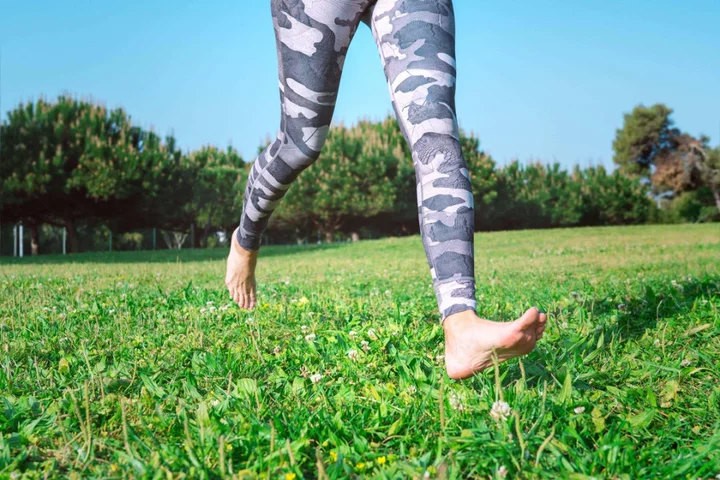Barefoot running seems to be rising in popularity, with fans hailing its many benefits – and some even tackling entire marathons without shoes.
The thought of bare soles beating the pavement may leave many people wincing, and there are certainly things to consider before giving it a go. But the idea of exploring the most natural way to move – with our primitive bare feet on the ground – could be tempting too.
So, what is the deal with barefoot running, and is it worth it?
Are there any benefits to barefoot running?
“Barefoot running really helps us reconnect with nature,” says Sammy Margo, a physiotherapist working with muscle and joint care specialists Deep Freeze and Deep Heat.
For many, this is a big part of the appeal – and some fans of barefoot running say they’ve experienced benefits to their running form too.
It’s important to remember our bodies may all respond differently to pressure and force, however, so how we react to barefoot running may vary.
“The body, muscles, and joints will take on the ground pressure differently,” says podiatrist Dina Gohil, brand ambassador for CCS Foot Care.
“Some people may experience improvement in pain in certain areas, and vice versa. The body works together and force is distributed to the best of your body’s ability to enable the movement you’re trying to achieve.”
If you can physically feel your feet hitting the ground however, in theory, your body may become more aware of those forces and movement patterns.
“Going shoe-free can help with your awareness of the position and movement of your body – proprioception. Exercising barefoot can also help restore natural running patterns and strides,” Gohil explains.
For example, she adds: “Being barefoot can actually allow you to be more conscious of how the heel strikes on the ground, and at what pace and strength. So doing activities barefoot can help strengthen the foot and ankle, improve muscle strength, increase flexibility, and allow for proper movement.”
Will you notice other changes?
According to barefoot runners, the soles of your feet will also become a lot more resilient over time.
“The best way to toughen feet is to try and walk on as many different surfaces as possible. Some people have also used newspapers on the ground to walk on to help with this process,” says Gohil.
The muscles in your legs will develop differently too. Margo says: “Running barefoot also activates smaller muscles in our legs and feet, helping to improve strength and overall mobility.”
Are there any risks or cons to think about?
While many runners experience a range of benefits from going barefoot, there are certainly potential risks to consider. First and foremost, there’s the risk of wounding yourself if you stamp on something sharp – so always be sensible when choosing where to run barefoot.
“Until your feet become acclimatised, you may find you are more prone to blisters until firmer skin or calluses have formed,” says Gohil. “There is also the increased risk of developing plantar fasciitis on the sole and heel of the foot. Other problems might include blisters, callus, cuts, infection, Achilles tendonitis, tight lower leg muscles, or stress fractures.”
Margo adds: “As our muscles are working harder, [they] may become shorter and tighter, and you may feel some pain initially when you start barefoot running.”
Having the support and comfort of a well-fitting running shoe can also be vital for many runners, particularly if you have a history of injuries or joint problems – so it’s advisable to speak with a healthcare professional before you attempt barefoot running.
Read MoreCharity boss speaks out over ‘traumatic’ encounter with royal aide
Ukraine war’s heaviest fight rages in east - follow live
How can you get rid of acne scars? From serums to laser treatments, experts talk through the options
5 viral TikTok fake tanning tips for the perfect summer glow
Not got the A-level grades you needed? Here’s how to get started with the clearing process

